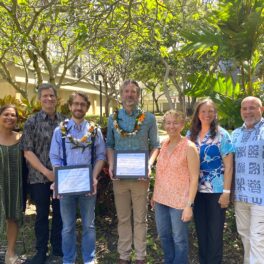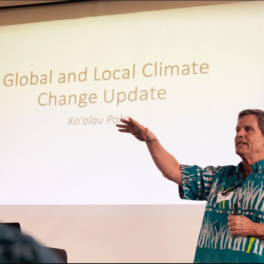Scientists drill deep to gain insights into East African climate history
 Lake Challa on the border of Kenya and Tanzania
Lake Challa on the border of Kenya and Tanzania
Researchers from all over the world gathered in November at a beautiful but unassuming volcanic lake in East Africa with the hope of uncovering its hidden record of the climate history so intimately involved in the development of our species. In collaboration with the International Continental Scientific Drilling Programme (ICDP), an international team of Earth scientists, including postdoctoral researcher Christian Wolff from the University of Hawaiʻi at Mānoa and the International Pacific Research Center (IPRC), deployed a floating drilling platform on Lake Challa to recover and analyze a complete core profile of its 210-meter thick sediment record.
East Africa is known as the cradle of humankind. The unusual geology and climatic conditions of East Africa created periods of highly variable local climate, which, it has been suggested, could have driven hominin evolution and migration out of Africa. Sediments on the bottom of Lake Challa, a 92-meter deep crater lake on the border of Kenya and Tanzania near Mt. Kilimanjaro, contain a uniquely long and continuous record of past environmental change in East Africa. The near-equatorial location and exceptional quality of this natural archive provide great opportunities to study tropical climate variability at both short (inter-annual to decadal) and long (glacial-interglacial) time scales, as well as the influence of this climate variability on the region’s freshwater resources, the functioning of terrestrial ecosystems and the history of the East African landscape in which modern humans (Homo sapiens) evolved and have lived ever since.
Read more on UH News.



